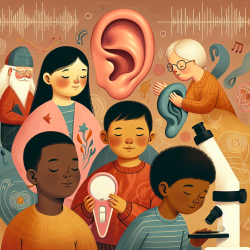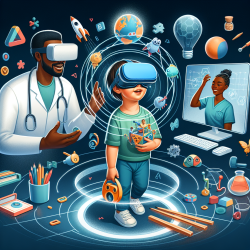Introduction
In the realm of pediatric audiology, understanding the nuances of congenital nonprofound bilateral sensorineural hearing loss (SNHL) is crucial for optimizing therapeutic outcomes. A recent study titled "Congenital Nonprofound Bilateral Sensorineural Hearing Loss in Children: Comprehensive Characterization of Auditory Function and Hearing Aid Benefit" provides significant insights into this condition, emphasizing the need for data-driven approaches in clinical practice.
Key Findings from the Research
The study, conducted on a cohort of children with nonprofound SNHL, revealed several critical findings:
- Symmetrical Hearing Loss: The research identified symmetrical sigmoid-like median pure-tone thresholds (PTTs) reaching 50–60 dB HL, indicating a consistent pattern of hearing loss across the study group.
- Hearing Aid Benefits: Most subjects demonstrated significant benefits from hearing aids (HAs) in both controlled laboratory settings and real-world listening situations, underscoring the importance of early HA intervention.
- Functional Characterization: The study highlighted the distinct relationship between distortion product otoacoustic emissions (DPOAE) and PTT, suggesting that DPOAEs can provide valuable insights into cochlear function.
- Implications for HA Fitting: The relationship between uncomfortable loudness levels (UCL) and speech recognition in noise has implications for HA fitting, advocating for individualized intervention strategies based on comprehensive auditory profiling.
Implications for Practitioners
For practitioners, these findings emphasize the importance of comprehensive auditory assessments and individualized HA fittings. By understanding the specific auditory profile of each child, practitioners can tailor interventions to maximize hearing aid efficacy and improve speech recognition in challenging listening environments.
Moreover, the study advocates for further research into the mechanisms underlying SNHL and the development of targeted treatment options. This approach aligns with the growing trend towards personalized medicine, where interventions are customized based on individual patient characteristics.
Encouraging Further Research
The research paper serves as a call to action for further investigation into the causes and mechanisms of congenital SNHL. By elucidating the underlying pathophysiology, researchers can pave the way for innovative treatment strategies that go beyond conventional hearing aids.
Practitioners are encouraged to stay abreast of emerging research and incorporate new findings into their clinical practice. By doing so, they can enhance the quality of care provided to children with hearing loss and contribute to the broader field of audiology.
Conclusion
In conclusion, the study on congenital nonprofound bilateral SNHL offers valuable insights into the auditory profiles of affected children and the benefits of early hearing aid intervention. By leveraging these findings, practitioners can improve diagnostic accuracy, optimize HA fittings, and ultimately enhance the auditory outcomes for children with hearing loss.
To read the original research paper, please follow this link: Congenital Nonprofound Bilateral Sensorineural Hearing Loss in Children: Comprehensive Characterization of Auditory Function and Hearing Aid Benefit.










